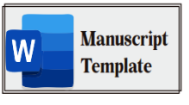MANAKAH PRIORITAS SEKTOR PENGEMBANGAN WAKAF DI INDONESIA?
Abstract
takes waqf ) related to which sector should be the priority of Indonesian waqf development in the future.
This research would determine the preference of waqif related to the Indonesian waqf development in the
future. This research used Analytic Network Process (ANP) method which was developed by Thomas L.
Saaty to identify priority rank of waqf development. Based on the analysis result, it could be seen that the
most prioritize of Indonesian waqf development was on the education sector. Waqif tended to trust waqf
institution which have been actively involved in the education sector. It showed that education sector was
the most important sector in Indonesia. Beside education, the second important ranked sector was the health
sector.Beside waqf development sector, analysis result found that priority of Indonesian development waqf
was more to the cash waqf. It showed that the cash waqf was viewed to be more important to be developed
in Indonesia because the waqf property was liquid (in cash money).
Keywords
Full Text:
PDF (Bahasa Indonesia)References
Abdurrahman. (1994). Masalah Perwakafan Tanah Milik dan Kedudukan Tanah Wakaf di Negara Kita. Bandung: Citra Aditya.
Ahmad, M., & Hassan, Y.B. (2015). Funding the Sub-Saharan African Education Sector with Waqf: Experiences from al-Azhar University and Selected Universities in Malaysia. Journal of Creative Writing, 1(2): 40-54.
Ahmad, A.B. (1987). Hukum Islam tentang Wakaf, Ijarah Syirkah. Bandung: P'T. Alma'arif.
Al-Alabij, A.(1989). Perwakafan Tanah di Indonesia dalam Teori dan Praktek. Jakarta: Rajawali.
Alias, N.A.B., Rozali, E.A., & Sidek, R.S.M. (2015). The History of Waqf Fund Development at Hospital Fatih, Istanbul (1470-1481M). Proceedings of The 6th International Symposium on Islam, Civilization and Science, UKM Malaysia.
Anshori, A.G. (2006). Hukum dan praktik Perwakafan di Indonesia. Yogyakarta: Pilar Media.
Ascarya. (2015). Determining the Real Causes of Financial Crisis in Islamic Economic Perspective: ANP Approach. Tazkia Islamic Finance and Business Review, 9(2):109-127.
Ascarya. (2011). The Persistence of Low Profit and Loss Sharing Financing in Islamic Banking: The Case of Indonesia. Review of Indonesian Economic and Business Studies, 1.
Aziz, M.R.A., Johari, F., & Sabri, H. (2013). Assessment on the Willingness Among Public in Contributing for Social Islamic Waqf Bank for Education. Australian Journal of Basic and Applied Sciences, 7(13): 172-176.
Aziz, M.R.A., Yusof, M.A., Johari, F., Ramli, A., & Sabri, H. (2014). The Relief of Higher Education Loan through Islamic Waqf Bank. Asian Social Science, 10(22): 175-181.
Bahroni, I. (2012). Streamlining Education Institution through Waqf Enlargement: An Experience of Gontor system. Jurnal At-Ta’dib, 7(2): 339-361.
Devi, A., & Rusydiana, A.S. (2016). Islamic Group Lending Model (GLM) and Financial Inclusion. International Journal of Islamic Business Ethics, 1(1): 80-94.
Escobar, M.T., Aguaron, J. and Jimenez, J.M.M. (2004). A Note on AHP Group Consistency for the Row Geometric Mean Prioritization Procedure. European Journal of Operational Research, 153: 318-322.
Finan, J.S. & Hurley, W.J. (1999). Transitive Calibration of the AHP Verbal Scale. European Journal of Operational Research,
: 367-372.
Harun, F.M., Possumah, B.T., Shafiai, M.H.B.M., & Noor, A.H.M. (2016). Issues and Economic Role of Waqf in Higher Education Institution: Malaysian Experience. Aliqtishad Journal of Islamic Economics, 8(1): 149-168.
Ho, W. (2008). Integrated Analytic Hierarchy Process and its Applications: A Literature Review. European Journal of Operational Research, 186: 211-228.
Ishizaka, A. & Labib, A. (2009). Analytic Hierarchy Process and Expert Choice: Benefits and Limitations. Operational Research Insight, 22(4): 201-220.
Khosravi, S., Sadeh, D.H.&Samadi, M. (2014). Customers Credit Rating of the Banking System by the Use of AHP and Topsis methods. International Journal of Innovative Research in Advanced Engineering, 1(10): 320-326.
Lipovetsky, S. & Conklin, W.M. (2002). Robust estimation of priorities in the AHP. European Journal of Operational Research, 137: 110-122.
Muhammad, A.S. (1997). Risalah Fi Jawazi Waqf Al Nuqud. Beirut: Dar IbnHazn.
Nurfalah, I., Rusydiana, A.S., Laila, N., & Cahyono, E.F. (2018). Early Warning to Banking Crises in the Dual Financial System in Indonesia: The MarkovSwitching Approach. JKAU: Islamic Economics, 31(2): 133-156.
Pitchay, A.A., Meera, A.K.M., & Saleem, M.Y. (2014). Priority of Waqf Development among Malaysian Cash Waqf Donors: An AHP Approach. Journal of Islamic Finance, 3(1): 013-022.
Rusydiana, A.S. (2018). Aplikasi Interpretive Structural Modeling untuk Strategi Pengembangan Wakaf Tunai di Indonesia. Jurnal Ekonomi dan Bisnis Islam, 4(1): 1-17.
Rusydiana, A.S. (2018). Sentiment analysis of Islamic waqf: Evidence in Indonesia. Maqdis: Jurnal Kajian Ekonomi Islam, 3(2): 123-134.
Rusydiana, A.S, & Abrista, D. (2018). Elaborating cash waqf development in Indonesia Using Analytic Network Process. International Journal of Islamic Business and Economics, 2(1): 1-13.
Rusydiana, A.S, & Abrista, D. (2017). Analisis Pengelolaan Dana Wakaf Uang di Indonesia: Pendekatan Metode Analytic Network Process (ANP). Al-Awqaf: Jurnal Wakaf dan Ekonomi Islam, 10(2): 115-133.
Rusydiana, A.S, & Al Parisi, S. (2016). How far has our wakaf been researched?. Etikonomi, 15(1): 31-42.
Rusydiana, A.S, et., al. (2009). Ekonomi Islam Substantif. Jakarta: GP Press.
Saaty, T.L. (1977). A scaling Method for Priorities in Hierarchical Structures. Journal of Mathematical Psychology, 15: 234-281.
Saaty, T.L., & Vargas, L.G. (2006). Decision Making with the Analitic Network Process. Economic, Political, Social and Technological Applications with Benefits, Opportunities, Costs and Risks. Pittsburgh USA: Springer RWS Publication.
Sipahi, S. & Timor, M. (2010). The Analytic Hierarchy Process and Analytic Network Process: An Overview of Applications. Management Decision, 48(5): 775-808.
DOI: http://dx.doi.org/10.15548/al-masraf.v4i1.205
Refbacks
- There are currently no refbacks.

This work is licensed under a Creative Commons Attribution-NonCommercial-ShareAlike 4.0 International License.
View My Stats

